Kolorit (Purple) triptych
Piezography
size: 120 x 173 cm, each 68" x 47"
year: 2012
A project that highlights the visual report between social realism and euphoric utopianism referencing the visual and material facilitation of socially unifying rituals.
Holi, celebrated mainly in India and other countries with a Hindu population, is an ancient spring festival of new life and fertility. It is amalgamated with various Hindu legends that add local variety and meaning to this energetic and joyous tradition also known as the festival of colours. During Holi, people take to the streets and temples dancing and singing, smearing each other with paint and throwing around coloured powders and dyes in an atmosphere of fun and good humour. For the duration of the festival, distinctions of caste, class, age, and gender are suspended.
In Barsana, where these photos of Holi were taken, the celebration includes a ritual that allows women to beat men with sticks but will not let the men retaliate.
Rather than showing a sum of independent persons moving, Korfmann’s new work records people merging into one being. In various places on earth collective rituals are photographed: events sustained by individual euphoria in which colour – or colourful garment – dissolves individuality. The highly aesthetic project reports of social realism and euphoric utopianism, acting in between the global event catalysing a visual surrender and the glocal play catalysing deeper contextual literacy.
Link to publication.
Kolorit (Red) triptych
Piezography
size: 120 x 173 cm, each 68" x 47"
year: 2012
A project that highlights the visual report between social realism and euphoric utopianism referencing the visual and material facilitation of socially unifying rituals.
Holi, celebrated mainly in India and other countries with a Hindu population, is an ancient spring festival of new life and fertility. It is amalgamated with various Hindu legends that add local variety and meaning to this energetic and joyous tradition also known as the festival of colours. During Holi, people take to the streets and temples dancing and singing, smearing each other with paint and throwing around coloured powders and dyes in an atmosphere of fun and good humour. For the duration of the festival, distinctions of caste, class, age, and gender are suspended.
In Barsana, where these photos of Holi were taken, the celebration includes a ritual that allows women to beat men with sticks but will not let the men retaliate.
Rather than showing a sum of independent persons moving, Korfmann’s new work records people merging into one being. In various places on earth collective rituals are photographed: events sustained by individual euphoria in which colour – or colourful garment – dissolves individuality. The highly aesthetic project reports of social realism and euphoric utopianism, acting in between the global event catalysing a visual surrender and the glocal play catalysing deeper contextual literacy.
Kolorit (Yellow), tryptic
Piezography
size: 172 x 120 cm / 68" x 47"
year: 2012
A project that highlights the visual report between social realism and euphoric utopianism referencing the visual and material facilitation of socially unifying rituals.
Holi, celebrated mainly in India and other countries with a Hindu population, is an ancient spring festival of new life and fertility. It is amalgamated with various Hindu legends that add local variety and meaning to this energetic and joyous tradition also known as the festival of colours. During Holi, people take to the streets and temples dancing and singing, smearing each other with paint and throwing around coloured powders and dyes in an atmosphere of fun and good humour. For the duration of the festival, distinctions of caste, class, age, and gender are suspended. In Barsana, where these photos of Holi were taken, the celebration includes a ritual that allows women to beat men with sticks but will not let the men retaliate.
Rather than showing a sum of independent persons moving, Korfmann’s new work records people merging into one being. In various places on earth collective rituals are photographed: events sustained by individual euphoria in which colour – or colourful garment – dissolves individuality. The highly aesthetic project reports of social realism and euphoric utopianism, acting in between the global event catalysing a visual surrender and the glocal play catalysing deeper contextual literacy.
Ibi
Piezography
size: 173 x 120 cm / 68" x 47"
year: 2014
A project that highlights the visual report between social realism and euphoric utopianism referencing the visual and material facilitation of socially unifying rituals.
The annual festival of Els Enfarinats takes place in the town of Ibi in Alicante, Spain on December 28, as part of celebrations related to the Day of the Innocents. It has the dynamics of a battle between a group of married men known as Els Enfarinats who make trouble and another group called La Oposicio who try to keep order. The confrontation is accompanied by egg and flower fights and the constant thunder of firecrackers.
The tradition’s origins are unclear. Les Enfarinats is suggested to have grown from the ancient Festival of Fools, once part of the old Roman festival of Saturnalia. By the 1950s, the festival had ceased to exist, but was revived in 1981.
Rather than showing a sum of independent persons moving, Korfmann’s new work records people merging into one being. In various places on earth collective rituals are photographed: events sustained by individual euphoria in which colour – or colourful garment – dissolves individuality. The highly aesthetic project reports of social realism and euphoric utopianism, acting in between the global event catalysing a visual surrender and the glocal play catalysing deeper contextual literacy.
Link to publication.
Castells
Piezography
size: 120 x 173 cm / 47” x 68” / 244 x 352 cm / 96” x 138,6”
year: 2014
A project that highlights the visual report between social realism and euphoric utopianism referencing the visual and material facilitation of socially unifying rituals.
A castell is a human tower of people standing on each other’s shoulders in structures that can reach up to ten storeys high. The towers are built during festivals in various towns in Catalu.a, Spain, by organised groups of castellers called colles castelleres. Stronger, heavier men form the base while lighter castellers form the higher storeys. Traditional music on gralla (a Catalan reed instrument) and tabor sets the pace during construction and deconstruction of the castells. Castells range in complexity from a column formed by single casteller storeys – the pilar – to constellations with dozens, even hundreds of people contributing to the base of the tower in support of several storeys formed by two, three or four castellers and finally the anxaneta, a young boy at the top of the castell. The castell is only considered successful if the enxaneta has reached his place at the top and raised one hand in a salute called aleta.
Rather than showing a sum of independent persons moving, Korfmann’s new work records people merging into one being. In various places on earth collective rituals are photographed: events sustained by individual euphoria in which colour – or colourful garment – dissolves individuality. The highly aesthetic project reports of social realism and euphoric utopianism, acting in between the global event catalysing a visual surrender and the glocal play catalysing deeper contextual literacy.
Cascamorras
Piezography
size: 173 x 120 cm / 68" x 47"
year: 2014
A project that highlights the visual report between social realism and euphoric utopianism referencing the visual and material facilitation of socially unifying rituals.
The Fiesta de Cascamorras is a festival celebrated annually in the towns of Guadix and Baza in Granada province, Spain. During the festival, Cascamorras, an inhabitant of Guadix dressed like a harlequin, travels to nearby Baza with the intention of recovering a statue of the Virgin Mary. He can do so by reaching Baza’s Iglesia de la Merced (Church of Mercy) with his cloths unstained but this is always prevented by the people of Baza who wait for him covered in black paint and armed with paint to throw at him. The tradition is said to go back to the late 15th century, when a Mozarabic chapel was being replaced by a church after the Reconquest of Granada. During demolition of the chapel, a workmen from Guadix heard a voice from underground saying “have mercy”. Thus he found a statue of the Virgin, which was given the name of Virgen de la Piedad (Our Lady of Mercy).
Rather than showing a sum of independent persons moving, Korfmann’s new work records people merging into one being. In various places on earth collective rituals are photographed: events sustained by individual euphoria in which colour – or colourful garment – dissolves individuality. The highly aesthetic project reports of social realism and euphoric utopianism, acting in between the global event catalysing a visual surrender and the glocal play catalysing deeper contextual literacy.
Link to publication.
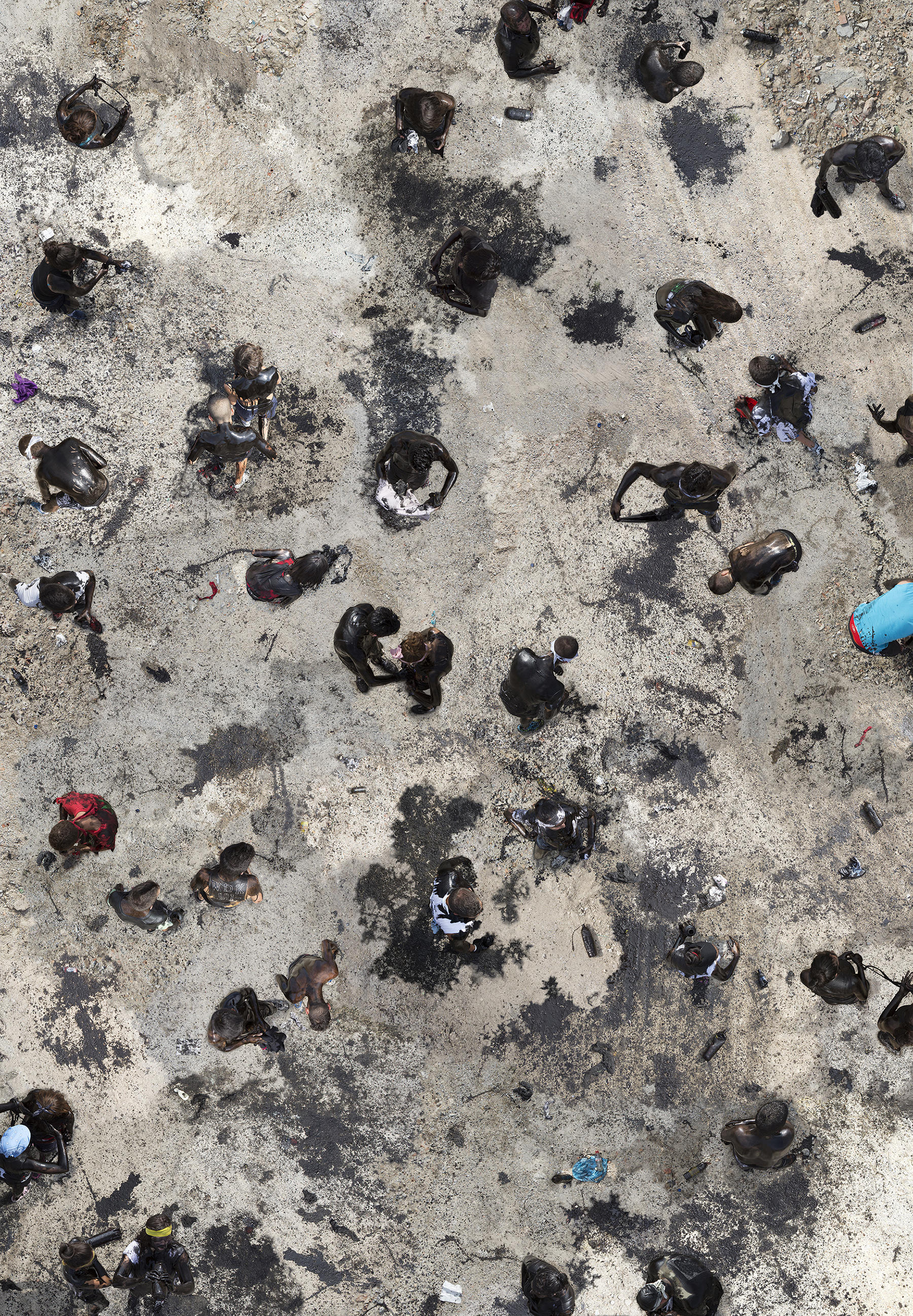
Mud
Piezography
size: 173 x 120 cm
year: 2014
A project that highlights the visual report between social realism and euphoric utopianism referencing the visual and material facilitation of socially unifying rituals.
Contrary to the other festivals photographed by Katrin Korfmann, the Boryeong Mud festival is a very young tradition. Devised in 1998 as a PR stunt to promote a range of cosmetics and medicinal treatments using mud found in the area of Boryeong, it aims at attracting as many people as possible with entertaining events like mud fights, mud parties, mud slides and mud skiing.
The government of South Korea has been investing heavily in (inter-)national tourism for decades, pairing festivals and theme parks with development of local industries. Its declared mission is to have 20 million foreign visitors in 2020, up from nearly 10 million in 2012. The Bonyeong Mud Festival has become the largest of many festivals in South Korea.
Rather than showing a sum of independent persons moving, Korfmann’s new work records people merging into one being. In various places on earth collective rituals are photographed: events sustained by individual euphoria in which colour – or colourful garment – dissolves individuality. The highly aesthetic project reports of social realism and euphoric utopianism, acting in between the global event catalysing a visual surrender and the glocal play catalysing deeper contextual literacy.
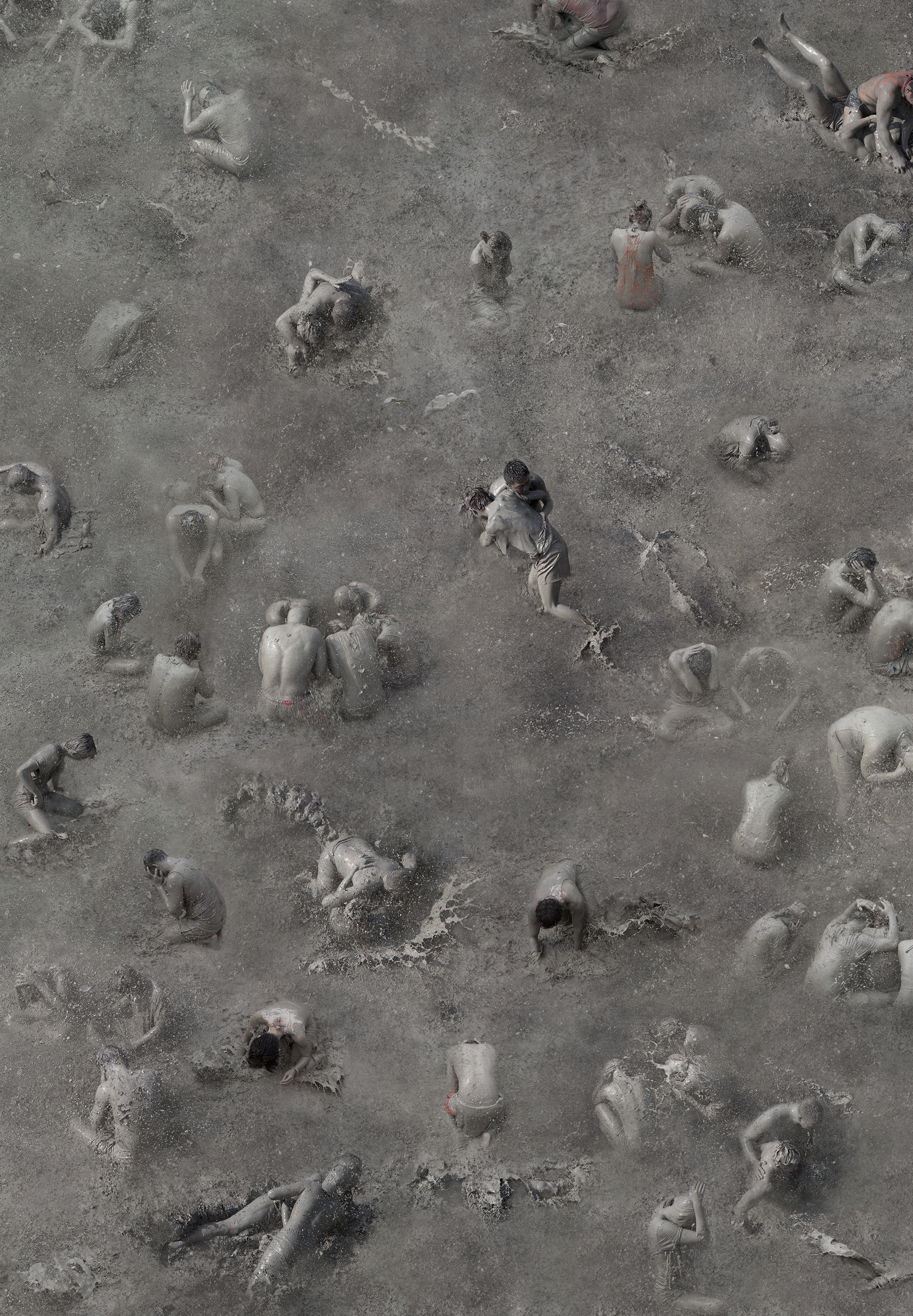
Wen Ji Qi Wu
Piezography
size: 120 x 173 cm / 47” x 68”, 244 x 352 cm / 96” x 138,6”
year: 2014
A project that highlights the visual report between social realism and euphoric utopianism referencing the visual and material facilitation of socially unifying rituals.
The Chinese Easter Dance Wen ji qi wu takes place every year at the university square of Xiamen, Fujian Province, China on Easter Sunday. More than 70 young man and woman dancers gather on the square and celebrate Easter, a tradition rarely found in China. The Easter Dance originated in China during the Tang Dynasty (618–907 AD) as part of the farming culture from the rural area of the Fujian mountains and only moved to the urban area of the Xiamen university campus within the last 50 years. The dancers are wearing costumes made from traditional Chinese fabric. They admire golden and red coloured hard-boiled eggs during their dance while the traditional Chinese Easter song is played. The colour gold represents wealth while the colour red symbolises good fortune and happiness. The mothers of the dancers boil and paint the eggs the day before the dance takes place, using self-made paint gained from herbs typical of the region. The dance is shaped according to Chinese characters forming the words wealth and happiness seen from Heaven. The correct combination and proper timing of the different parts of the dance is very important to make a successful choreography.
Rather than showing a sum of independent persons moving, Korfmann’s new work records people merging into one being. In various places on earth collective rituals are photographed: events sustained by individual euphoria in which colour – or colourful garment – dissolves individuality. The highly aesthetic project reports of social realism and euphoric utopianism, acting in between the global event catalysing a visual surrender and the glocal play catalysing deeper contextual literacy.
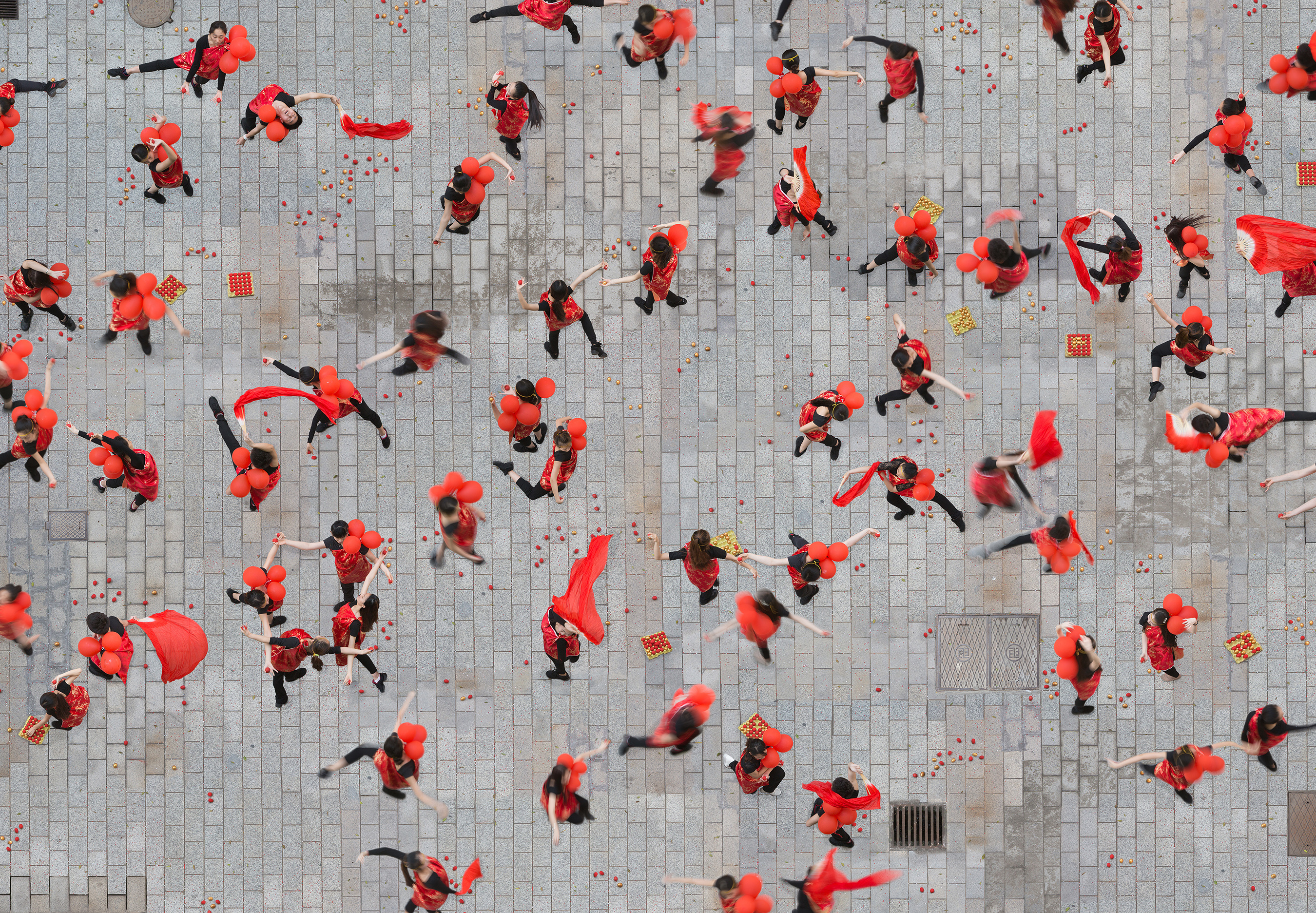
Installation view
Boeske Projects Amsterdam
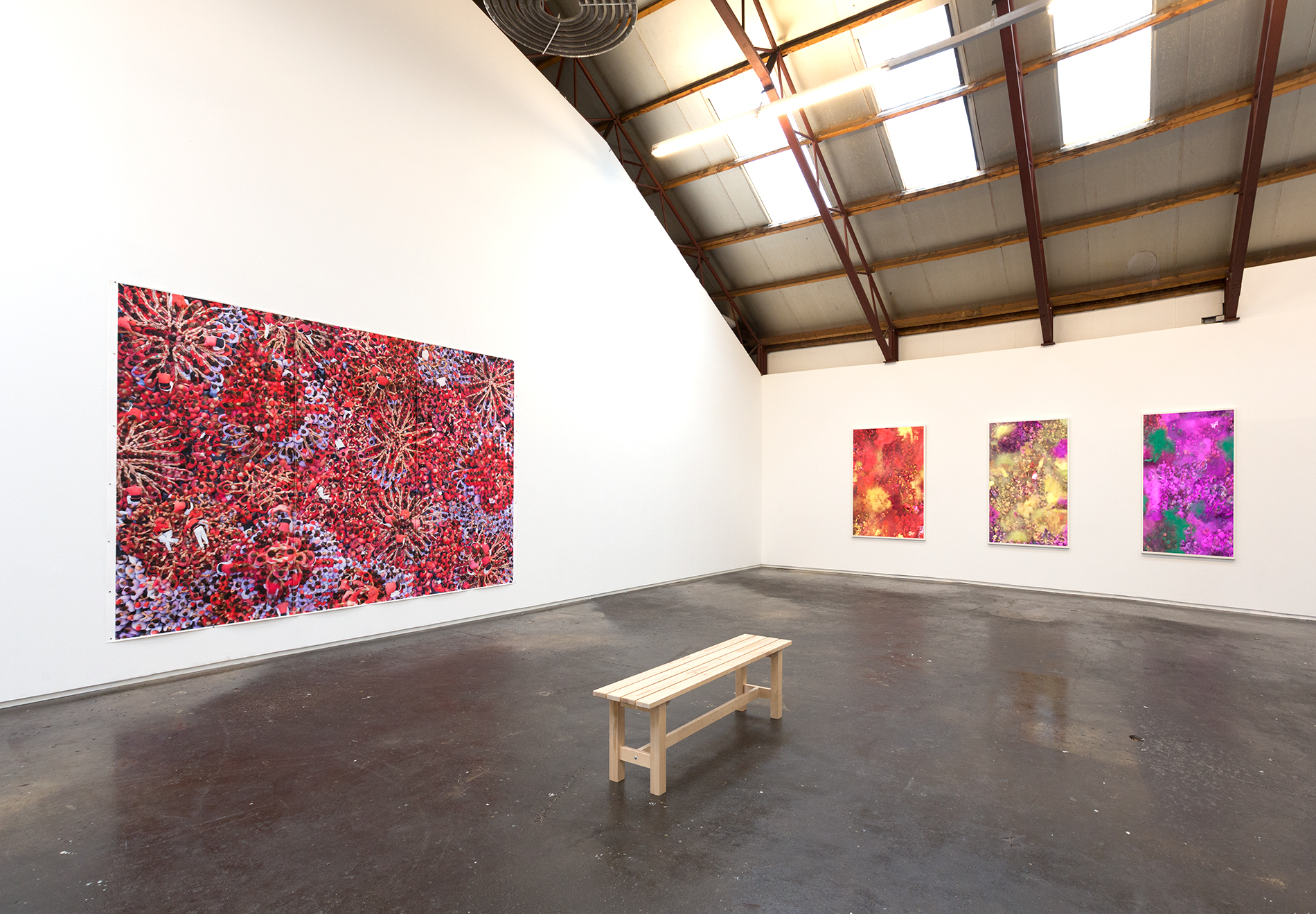
Installation view
Kopeikin Gallery Los Angeles
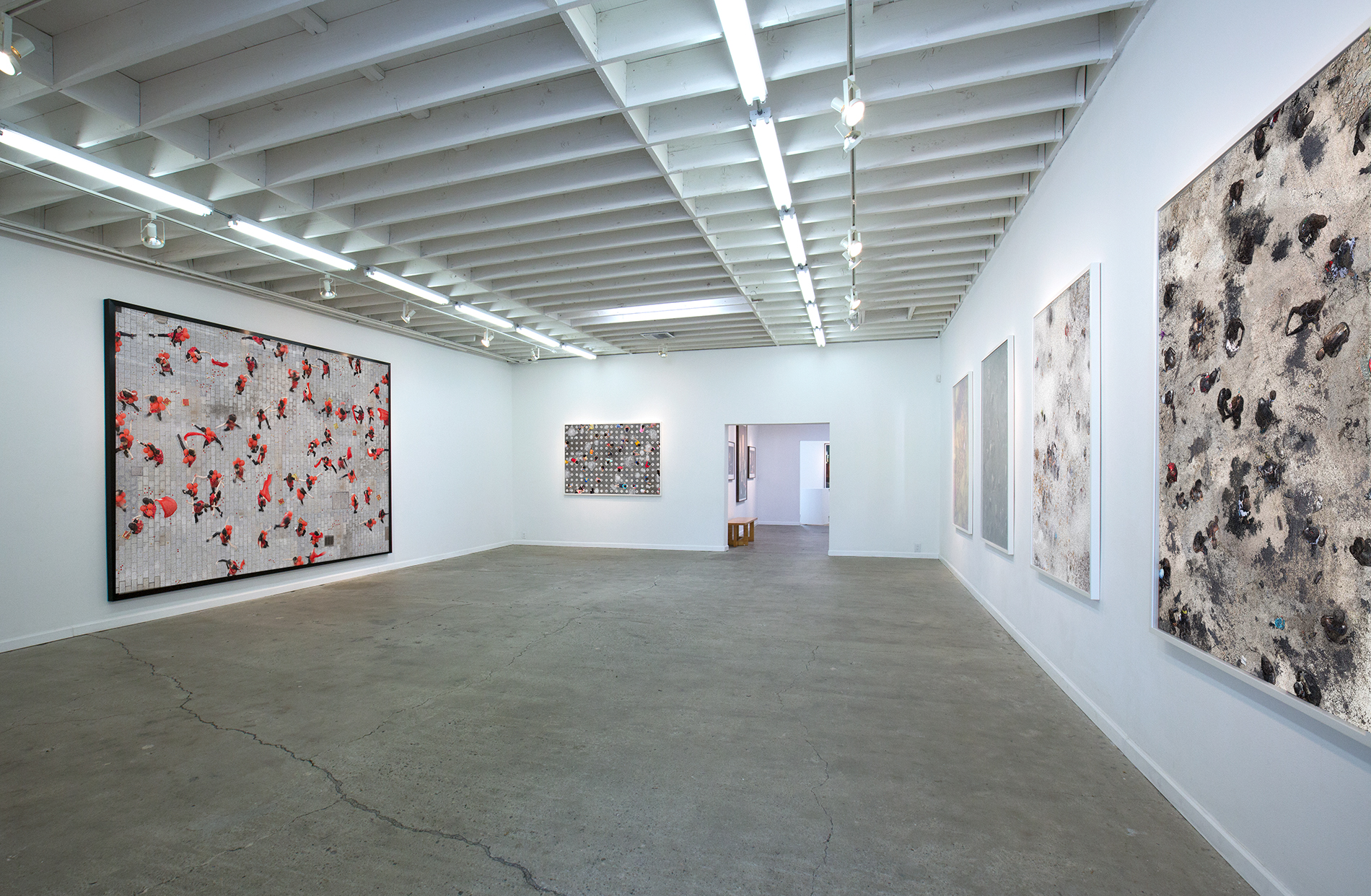
Installation view
Kopeikin Gallery Los Angeles
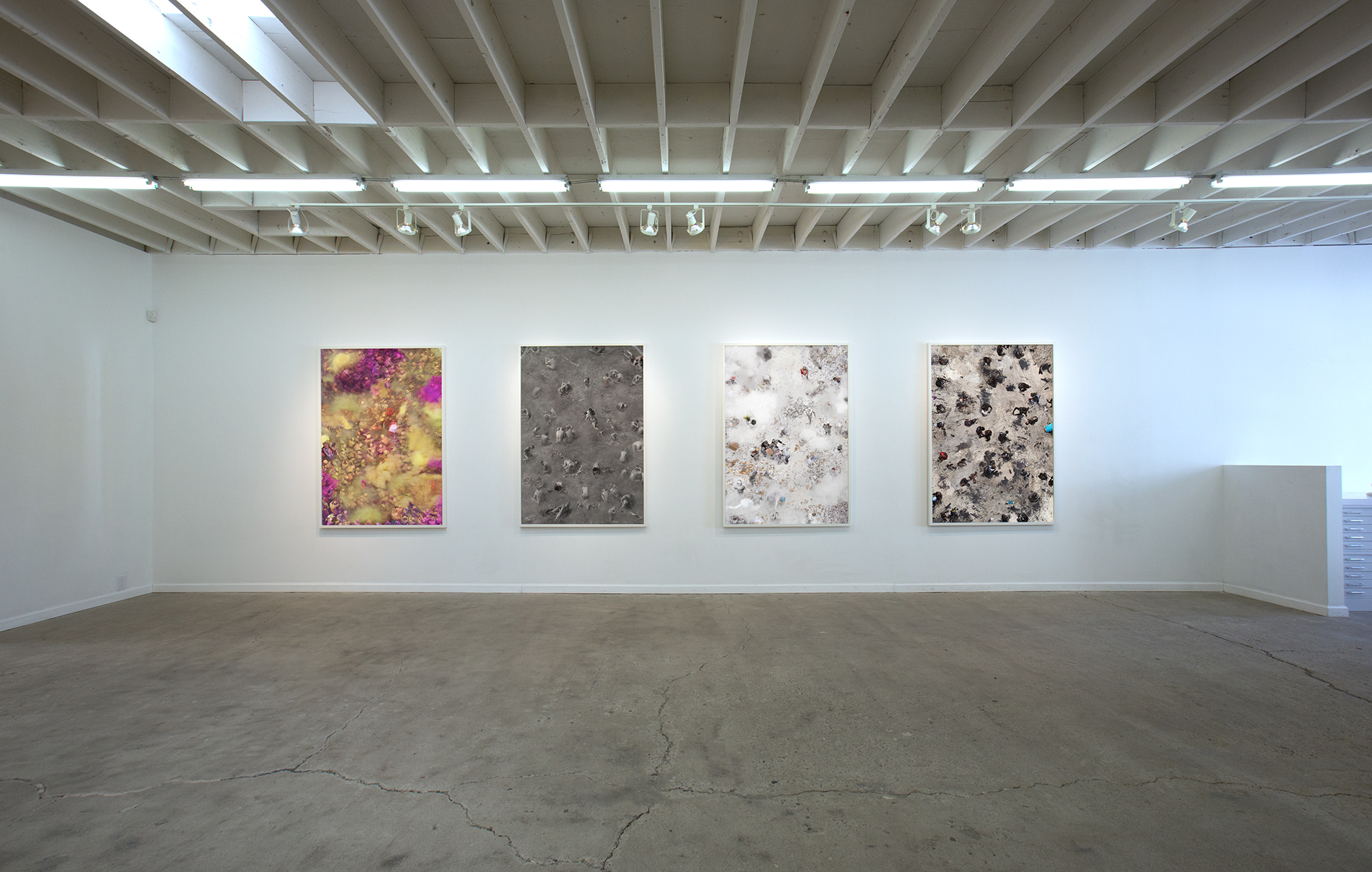
Blauwe Bloem
Piezography
size: 100 x 80 cm 39,4 " x 31,5 "
year: 2015
The picture 'Blauwe Bloem' was created in collaboration between Katrin and the children, parents, and teachers of St. Jan Primary School. All costumes, props, and an accompanying story were created together.
A project that highlights the visual report between social realism and euphoric utopianism referencing the visual and material facilitation of socially unifying rituals. Rather than showing a sum of independent persons moving, Korfmann’s new work records people merging into one being. In various places on earth collective rituals are photographed: events sustained by individual euphoria in which colour – or colourful garment – dissolves individuality. The highly aesthetic project reports of social realism and euphoric utopianism, acting in between the global event catalysing a visual surrender and the glocal play catalysing deeper contextual literacy.
